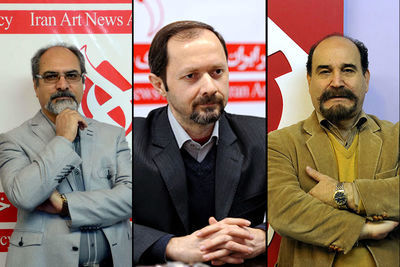Iranian artists repercussion to the Turkish reflection on the Islamic calligraphy declaring as intangible cultural heritage

TEHRAN.(Iranart) –Ali Shirazi, Hamidreza Glichkhani and Javad Bakhtiari, Iranian calligraphy masters, called Turkey's action in registering Islamic calligraphy in their own name in Intagible herritage of UNESCO as a forgery of history
Iranian masters of calligraphy believe that Turkey has made great efforts in applying to register calligraphy on UNESCO’s List of the Intangible Cultural Heritage of Humanity, while Iran has been negligent.
According to a statement released by the Turkish Ministry of Culture and Tourism, Turkey has applied for the registration of calligraphy on UNESCO’s Representative List of the Intangible Cultural Heritage of Humanity.
Hamidreza Qelichkhani said that Iran’s Cultural Heritage, Tourism and Handicrafts Organization (CHTHO) began to work on preparing the document on calligraphy to apply for registration on the UNESCO list last year and had asked him for cooperation, but it has not been completed and there always worried that other countries might register calligraphy under their own names.
“Of course I must say that countries like Iran, Turkey, and Iraq can apply for registration of calligraphy on the UNESCO list since it’s a joint culture between these countries. But those countries that have more experience are viewed more favorably, and this time Turkey has taken the lead which is a notable credit for the country,” he added.
“Nastaliq and shekasteh nastaliq all belong to Iran and we can register them first on our national heritage list and then apply for the UNESCO World Heritage List. However, we have been negligent and the only way left is to register them as quickly as we can,” he added.
“A book was published in Turkey to introduce calligraphers of Istanbul. Nevertheless, they have introduced calligrapher Mir-Emad as a Turkish calligrapher since he had traveled to Turkey and lived in Istanbul for a few years,” he said.
Mohammad ibn Seyfi Qazvini (1553-1615) known as Mir-Emad was the titan of the nastaliq script, a unique and ornate Iranian style of calligraphy.
“They also tried to change the name of nastaliq to taliq in recent years, which shows that they have a long-range program and aim to gain a greater share of Islamic art from other civilizations. Turkish calligraphy is a branch of Iranian calligraphy,” he added.
“We always wait until something happens and then get worried. But we must first register our Iranian style of calligraphy on the world heritage list so that we can be the heir to this ancient and precious asset,” he noted.
Ali Shirazi for his part said that Turkey has a long and noteworthy background in calligraphy, but calligraphy was limited to the city of Istanbul and the number of those who practiced calligraphy was small but were being supported by the Turkish government.
“Turkish calligraphers are very active in their country and other countries as well, and this has made Turkey into the heart of calligraphy,” he said.
“Our country, Iran, has long had a broad background in calligraphy, and many Iranian calligraphy works are sold in world auctions, but the art of calligraphy has been ignored in the country and the organizations in charge do not support the calligraphers,” he commented.
Javad Bakhtiari also said that when he was in charge of the Association of Calligraphers, he seriously pursued the world registration of calligraphy, but the officials did not cooperate much and that Turkey made use of the opportunity for its registration.
“Turkey enjoys great masters of calligraphy in the naskh and thulth styles of calligraphy, but they have nothing to say in nastaliq, and Iran is famous for its nastaliq style of calligraphy. However, they have found a way to register it in their name,” he concluded.

